Marmalade: A life story.

Having declared my flavour preferences above, it will not surprise the US readers of this blog to hear that marmalade is one of the only condiments that I really enjoy. However, this was not always the case. While I grew up with marmalade in my household kitchen, in my pets, and in the books I read, it was far too complex in its flavour profile for a small child. I could never understand my parents’ and grandparents’ love of weird things like fruitcake, Christmas Pudding, and marmalade. As I’ve got older I’m much more open to the bitter spectrum of flavours, and now I seek them out.

Marmalade features in the popular children’s fiction that I grew up with. Australia in the 1970s was steeped in Britishness. Our membership of the crumbling empire was never in doubt in my childhood mind. This was partly fuelled by my parents’ and grandparents’ backgrounds; all born here, but very much of their generations. Empire. So I read books like Orlando, and the Church Mice series (which featured a marmalade cat called Sampson) and of course Paddington, who was a strange but engaging character, and now such an anachronism that I couldn’t get either of my children to read the books (though Mr13 did go to see the film with his grandmother.) I, however, loved the books, and read them repeatedly.
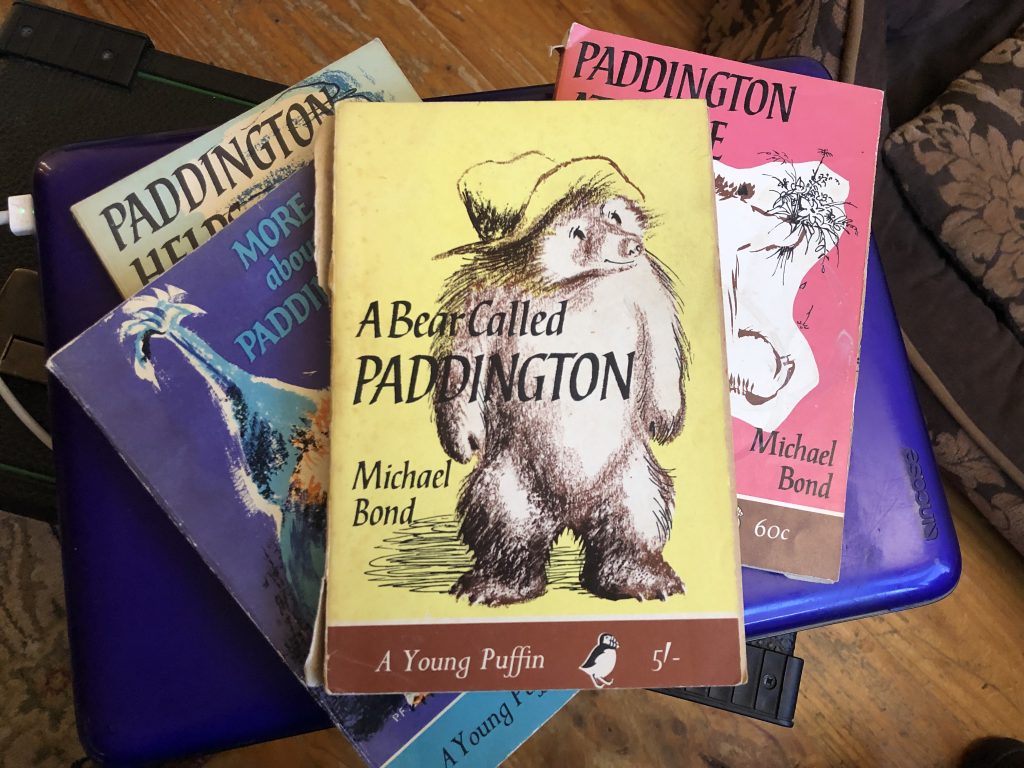
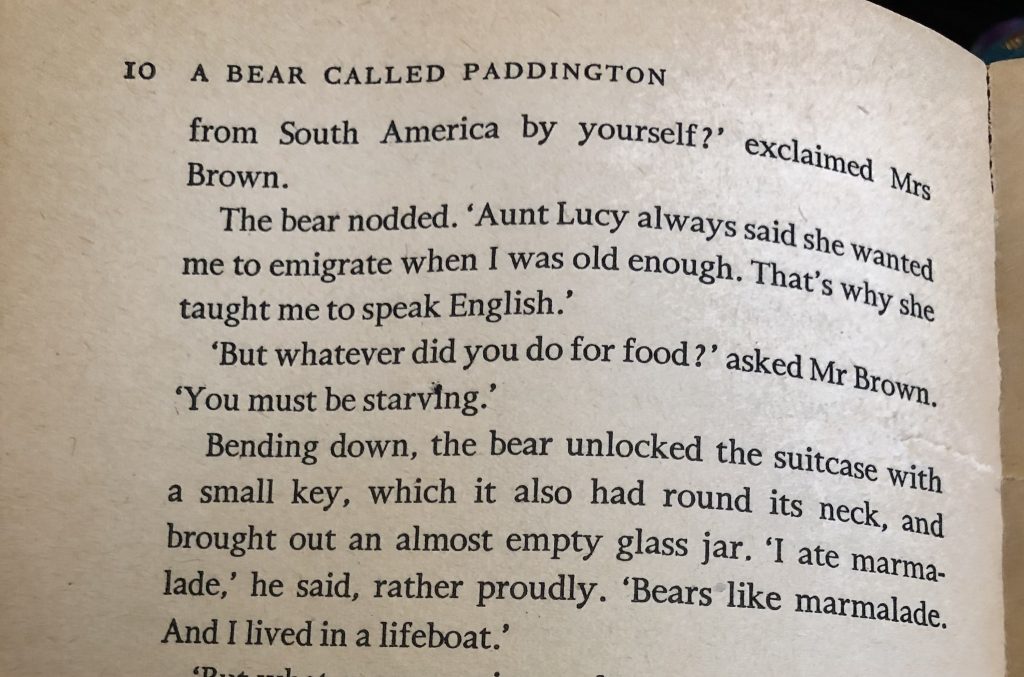
My maternal grandmother made marmalade in that short period in winter when seville oranges (digression: I only just this minute wondered if seville oranges are the same as the Poor Man’s Orange, and the answer would seem to be yes, and no…the ones mentioned in the book would be seville, but RP would have grown up with the NZ ones) are in season. I would get to witness this process when I got packed off to visit my Melbourne grandparents during the winter holidays. My grandmother emphasised the importance of using a couple of marbles (a toy which I collected voraciously) to stop the marmalade from sticking to the bottom of the pan. She used a big thin bottomed aluminium pan, which elevates the danger.
What is marmalade? Wikipedia says it is specifically citrus jam, and that is what we think of, but it does mention that it was a term historically applied to any fruit conserve (I’m not sure ginger is a fruit, but that’s one of my linguistic digressions), specifically quinces, so I give you quince paste (which I do usually make with sugar, but I might try this recipe with my last two that are still making my kitchen smell nice).
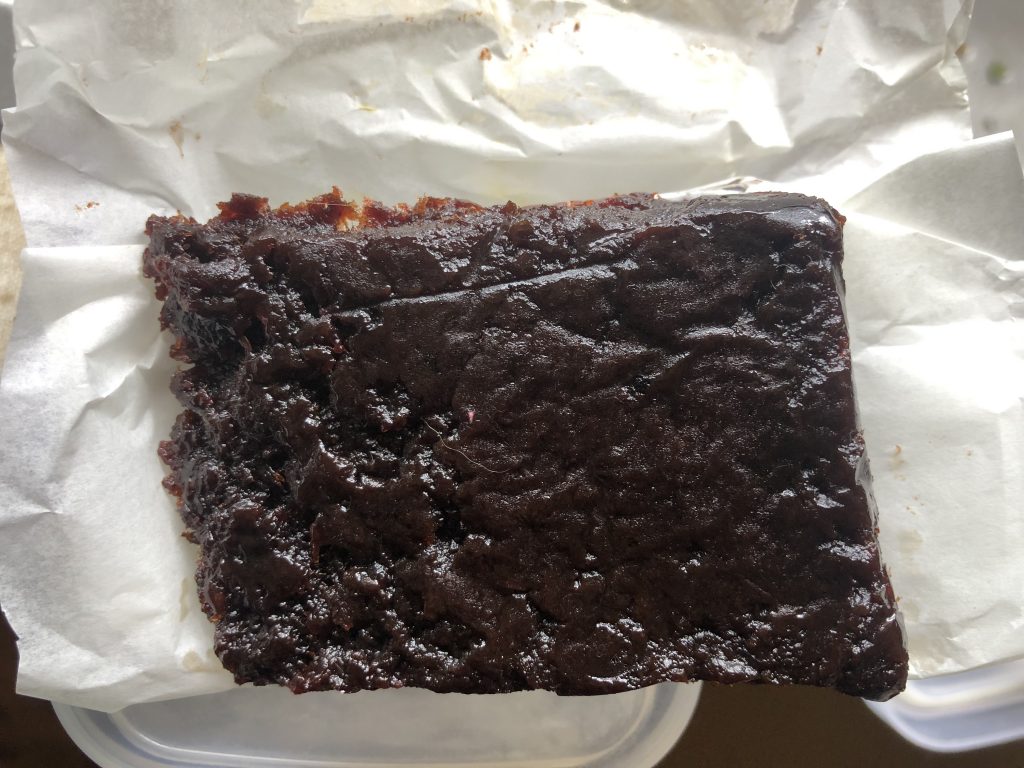
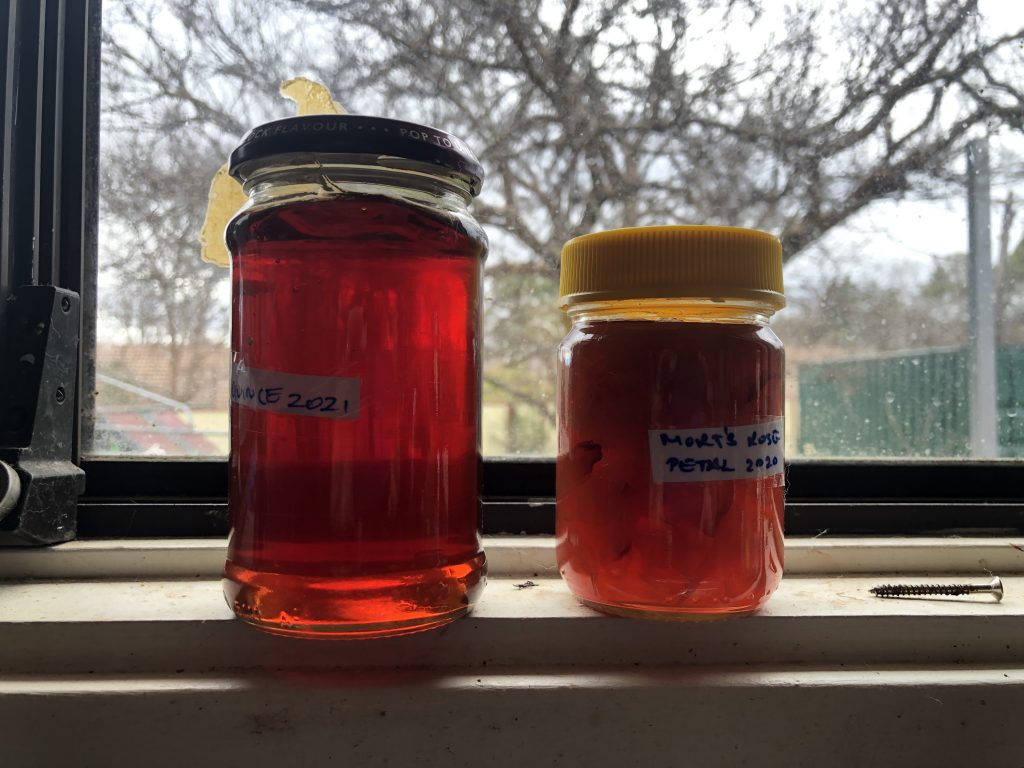
And quince jelly on the left, and rose petal marmalade (jam), both of which are sweet af, and not at all bitter, but look very pretty. The rose petal colour appears like magic when the lemon juice is added.
So yes, I make preserves.
As mentioned above, I didn’t like marmalade as a child. It was a weird bitter thing that adults put on toast, and made using toys. Fast forward to around 2015. I’d acclimatised to eating mince pies and Christmas Pudding, and I was hanging around morris dancers a lot. And some of them being adults, or actually English or Irish, marmalade was a popular toast topping at communal breakfasts, and so I got to enjoy it (though I think it’s a bit like Stockholm Syndrome, I certainly didn’t ever buy any to eat at home). Fast forward again to 2019, my father (great marmalade fan), for whom I had been caring, died in May, and in July, the produce shop I work for got in a lot of blood oranges, which are a fabulous citrus, and I thought, for the first time “ooh, blood orange marmalade would be great”.
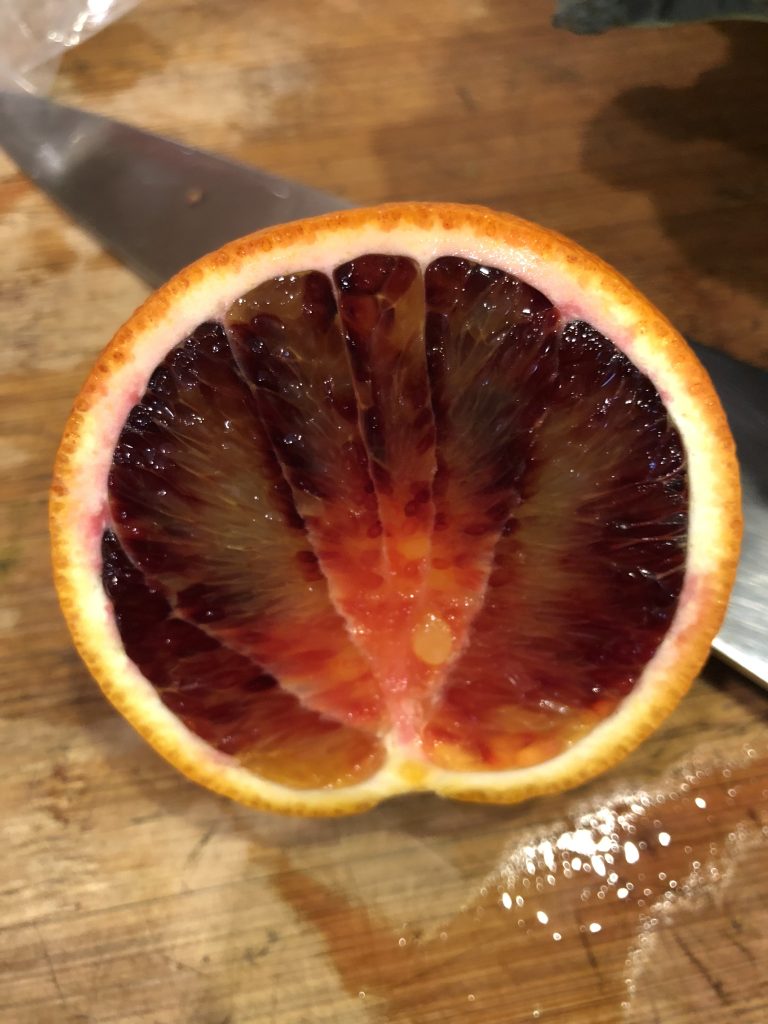
It turns out that I was not the first person to have this thought, so for the first time in my life, I set out to make marmalade. It turned out to be incredibly therapeutic in dealing with my father’s death, and so I made another batch. The first one hadn’t set all that well, so I had to reboil it and add some pectin, and it ended up a bit cloudy. The second batch was good! Interesting colour, and I’d sliced the fruit thick enough, that it was pithy and bitter (though not quite bitter enough, apparently).
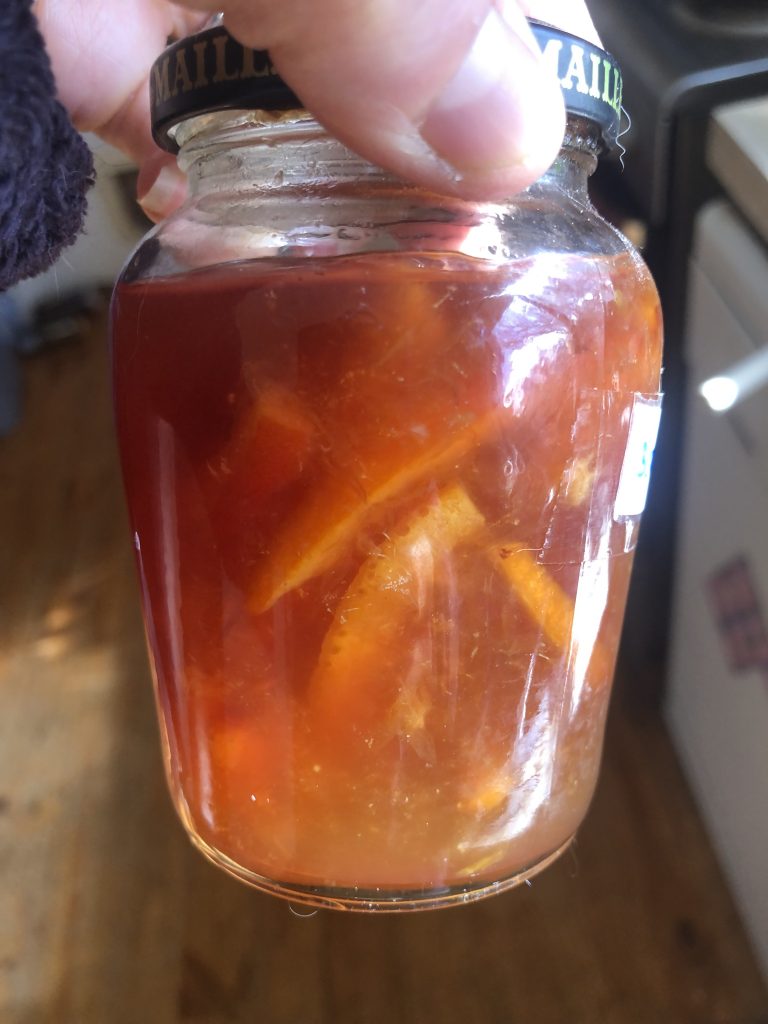
I found early on in my adventures in eating my home made marmalade that it’s often too sweet for my “bitter and sour” craving taste buds, so pairing it with cheese is a good solution. It needs to be a fairly assertive cheese in the case of the blood orange. Aged cheddar, on sale at my supermarket for 70c for a 250g block ticks that box. Remember decimal currency from the top of my post? And the book that was 5/d pre-decimal and 60c post? 55 years ago. Taking inflation into account, this cheese was basically free, and I bought as much of it as they had, and stashed it in my freezer. I won’t run out of toilet paper (not that I was worried, because there are alternatives) or cheese if we get locked down again. The aged cheddar is sharp, and salty, just what this sweet marmalade needs.
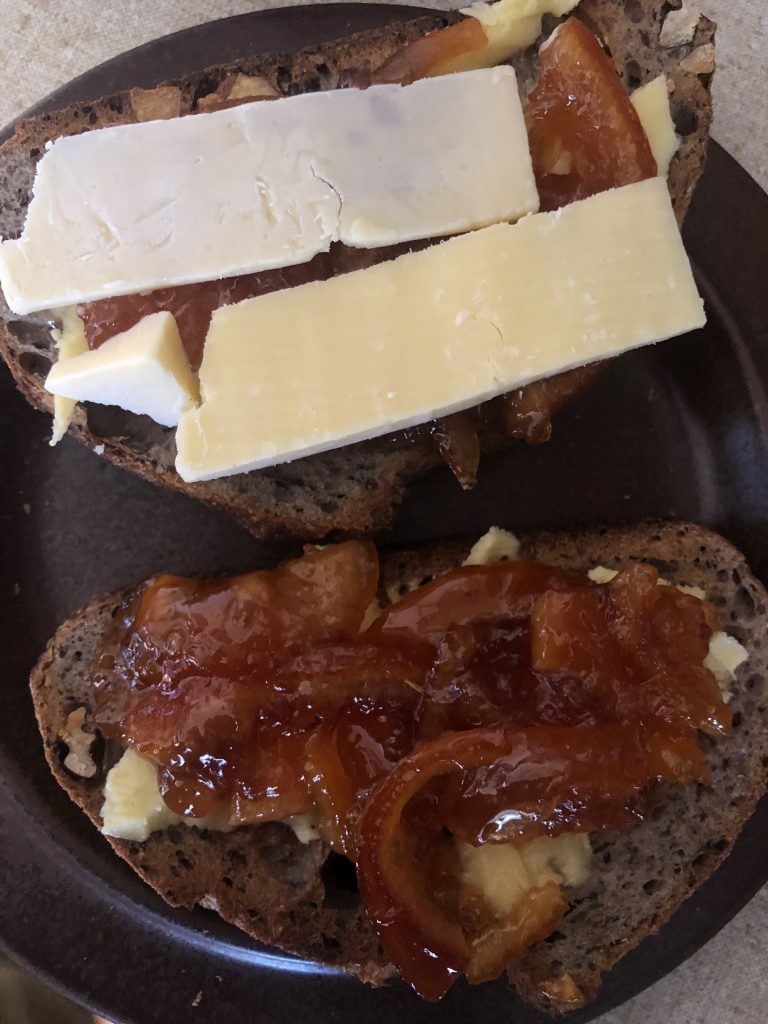
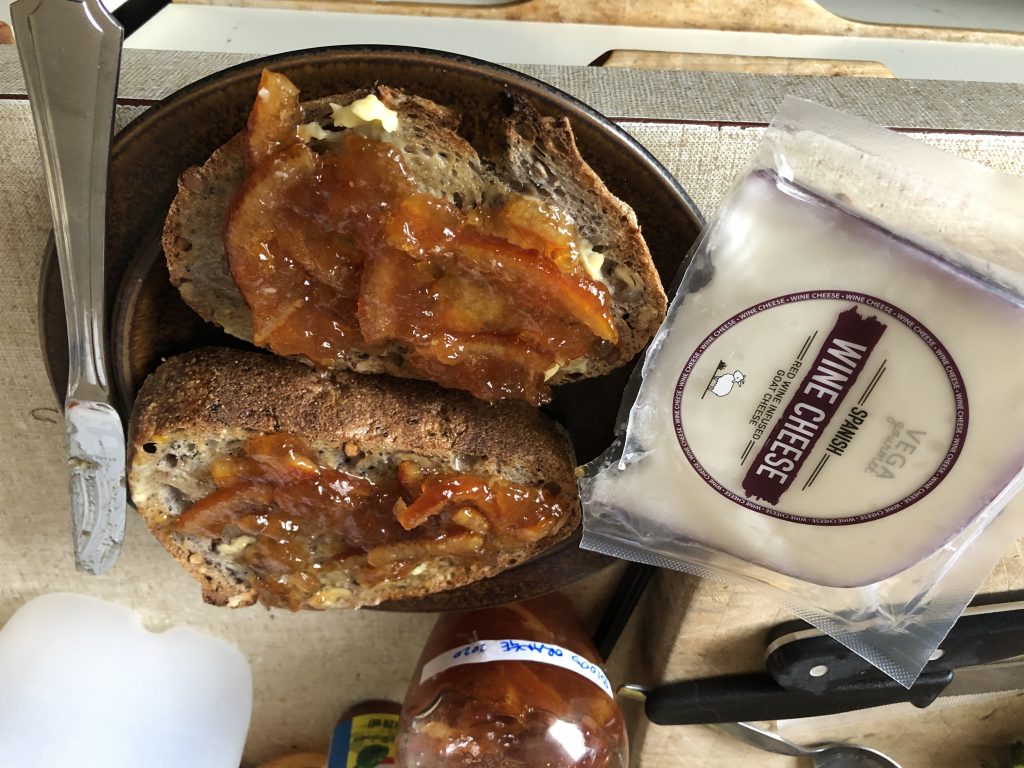
Having made a couple of batches, I decided to branch out…what else is good? I made some lime and ginger and some pink grapefuit, both of which were stunning; exactly the sour/bitter profile I was seeking, and cumquat. By this time I wasn’t using recipes, just weighing the fruit and cooking it in water, and adding the same weight of sugar as the resulting fruit, and boiling it until it sets. I later found that most recipes suggest zesting and peeling the grapefruit to remove the pith and make it less bitter (but why would you do that?) I need to make more, it’s all gone, and it was one of my favourites. First I have to eat or give away all that blood orange though! It really was a very therapeutic grief processing strategy, and it’s nice to be able to hand out jars to friends.
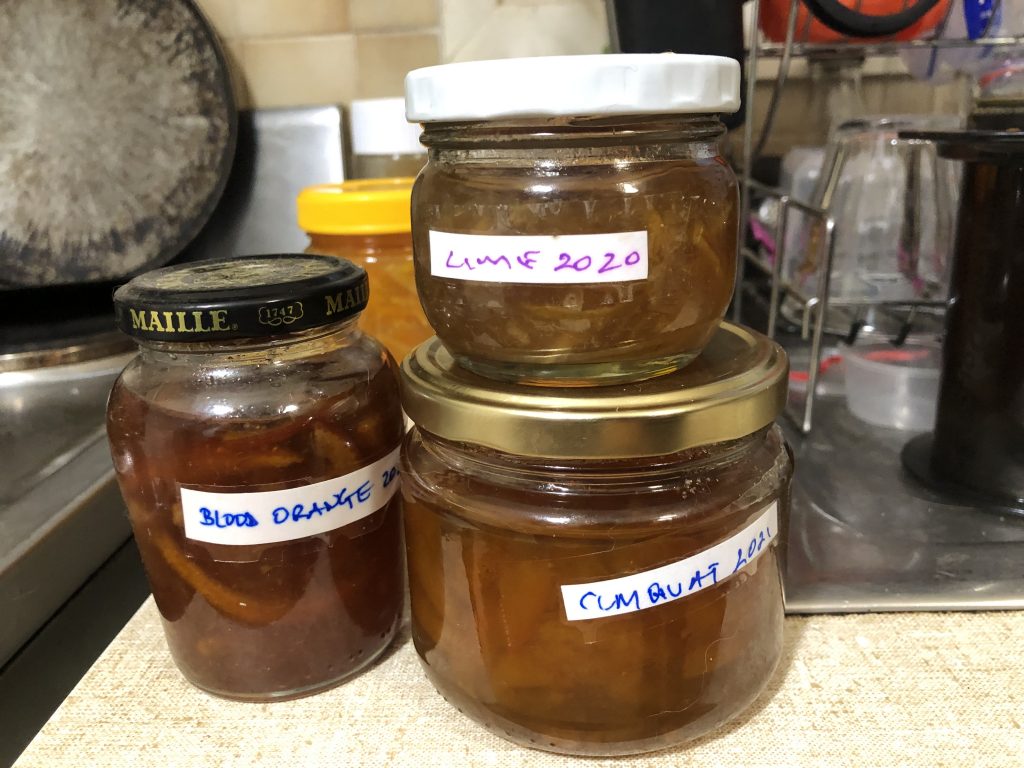
A couple of weeks ago, my shop got tangelos. It’s a favourite time of year for me. They’re my favourite eating citrus, and I’m impatient for their arrival every year. “This is the year I’m going to make tangelo marmalade” I said. Tangelos, like most of my favourite citrus, are a hybrid between an easy to eat variety and a pomelo. I’ve never actually eaten pomelo; they’re kind of scary (and I balk at eating something as big as my head, though I know they’re mostly pith), but my local Costco has had them in the past, and I really oughta walk the walk and buy some.
Spiced tangelo marmalade; I chose this recipe because it is from our neighbours and they seemed to have a better handle on tangelos than we do… It did recommend soaking the fruit in water overnight to help soften it, and get the pectin going, but I didn’t have time for that, so I went for cooking it slowly over several hours, like I would for an orange marmalade.
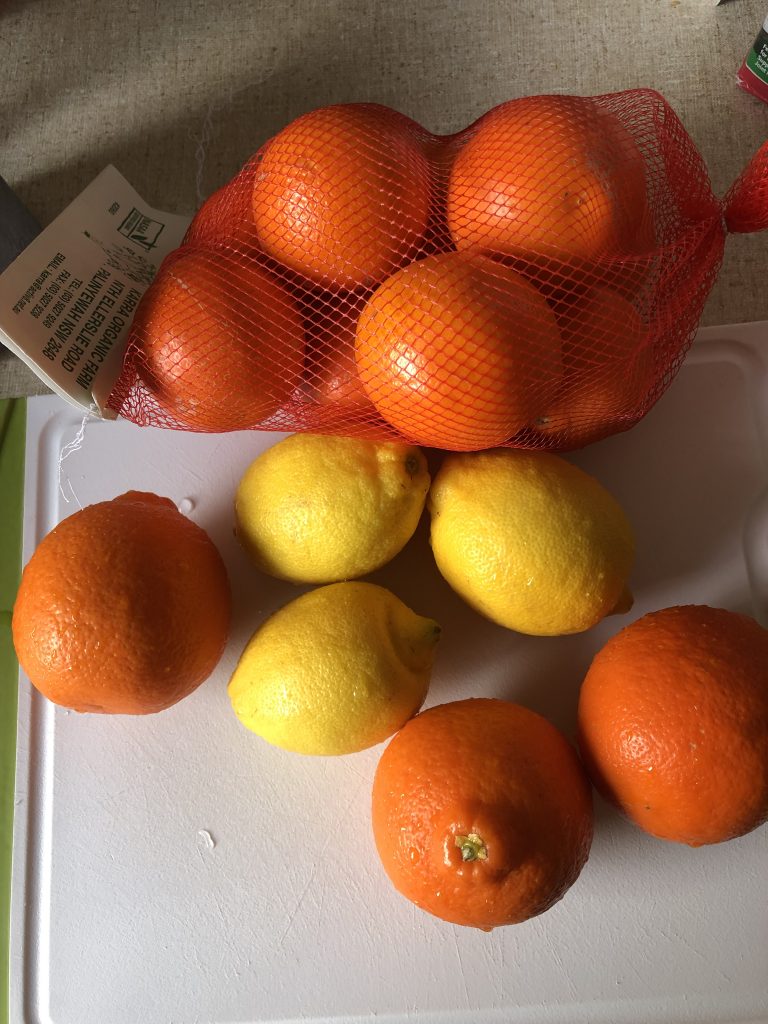
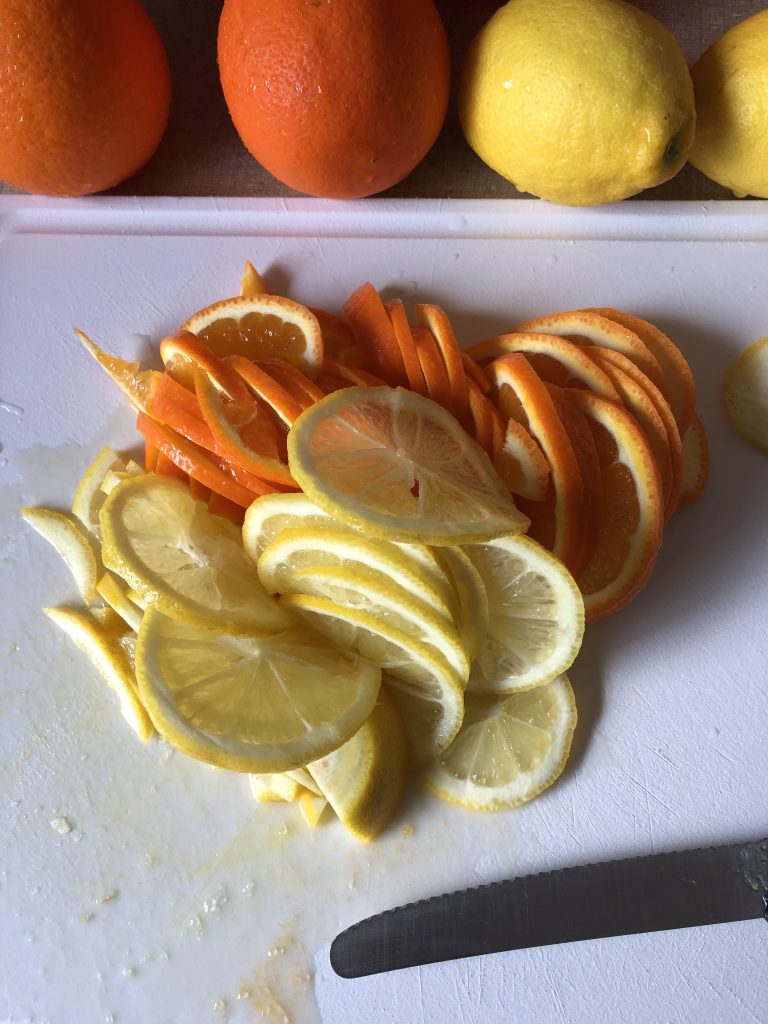
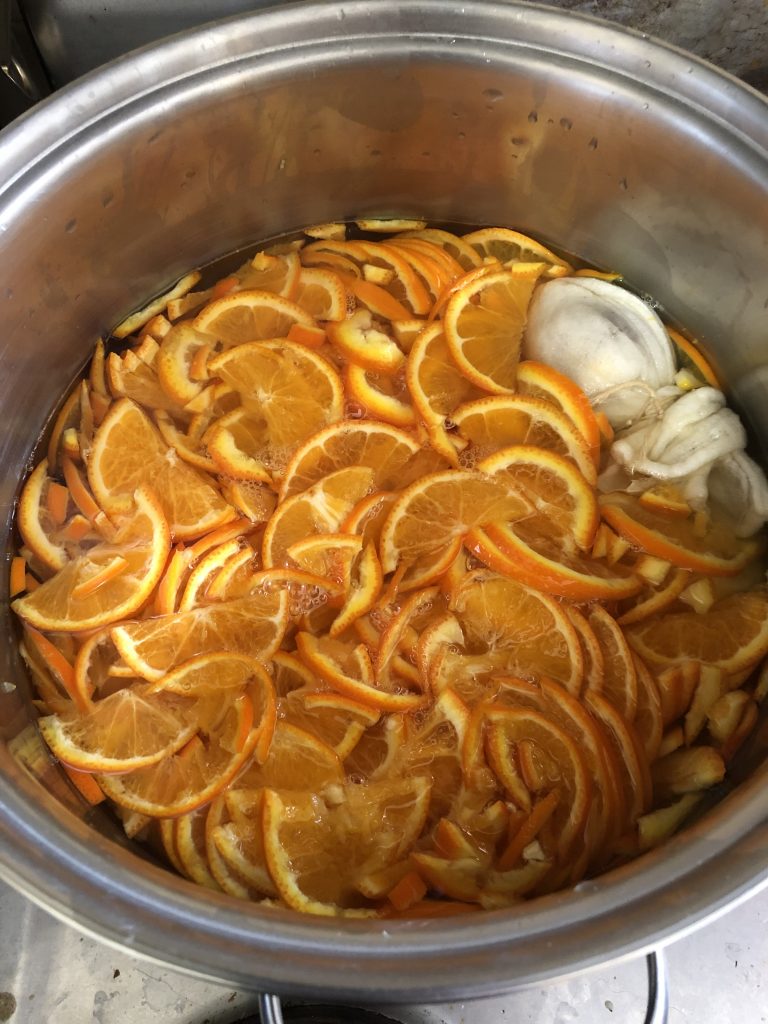
So several hours later, after cooking it until the rind was soft, and adding a random amount of sugar, (I do get a bit haphazard, I couldn’t be arsed weighing the boiled mixture, so I just added the same weight of sugar as the original weight of tangelos, which is actually what the NZ recipe suggests you do.) the marmalade was crinkling when I put a spoonful on a cold saucer. As you can’t actually see in the above pic, the pot I use is a stainless steel stock pot. It has a heavy copper-core base, so the heat is better distributed than in my grandmother’s old aluminium one, and I don’t use marbles (and that means no surprises in the jar as happened when she accidentally used a cats-eye marble with a yellow eye. She always used blue ones after that so she could find them).
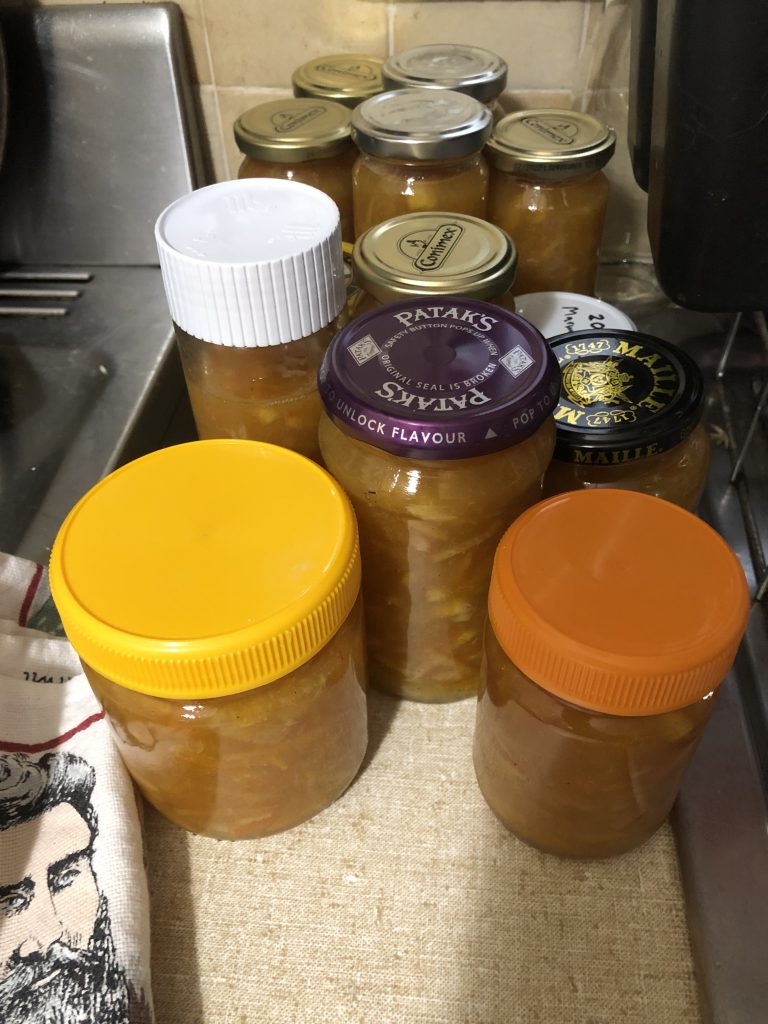
Done, and bottled. Tangelo isn’t a clear marmalade like the blood orange, but the flavour is superb! It’s like a shaft of sunlight in a jar, warm and spicy, and perfect with a big mug of chai. I’ve been hooked on this local sourdough, which is chewy and has crunch and flavour from the nuts and quinoa.
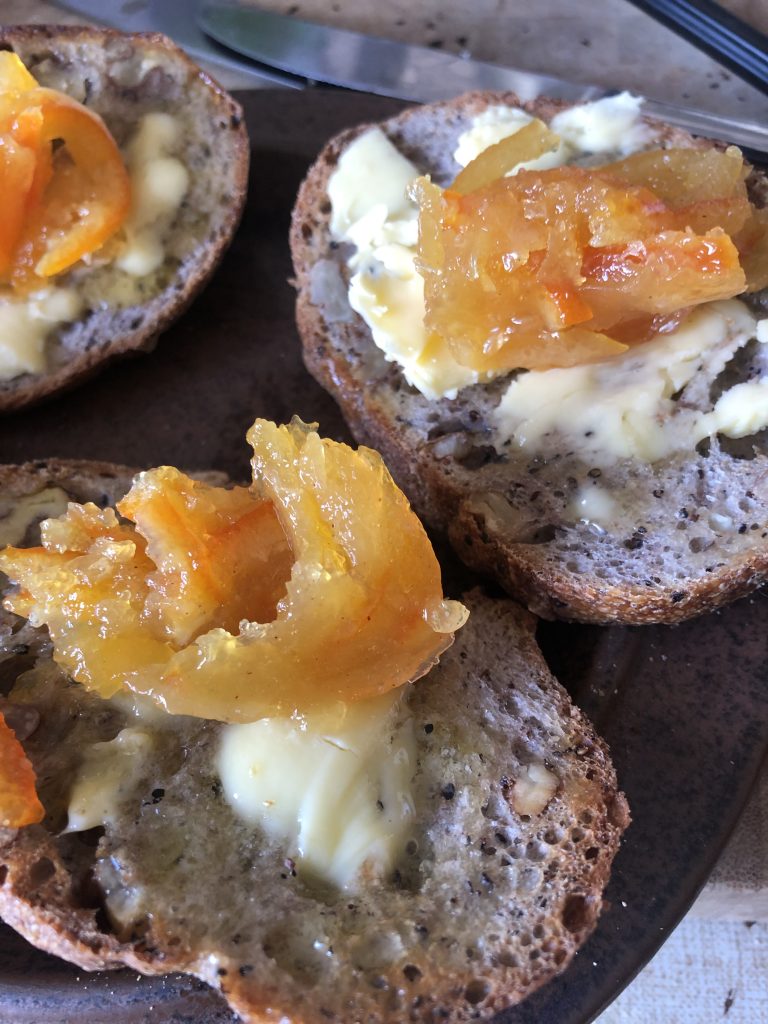
As you will have noticed, I eat all my marmalade on toast, usually with cheese, open faced. Despite what Paddington claims, I’m not convinced that a squashy bread sandwich, kept under my hat, is a superior way to enjoy it. This is partly because my house is very cold, and the butter is currently unusable for sandwiches. You’d want a pretty well-cooked rind too, to go with the sogginess of the bread, and perhaps the cheese would be less relevant, with two layers of bread to mitigate the sweetness. That’ll be a project for the summer, I reckon.
I’m a mother of two boys. I work selling organic produce to gullible locals, and in my spare time I run as far as I can. Oh, and I live in Australia, married to a US citizen.



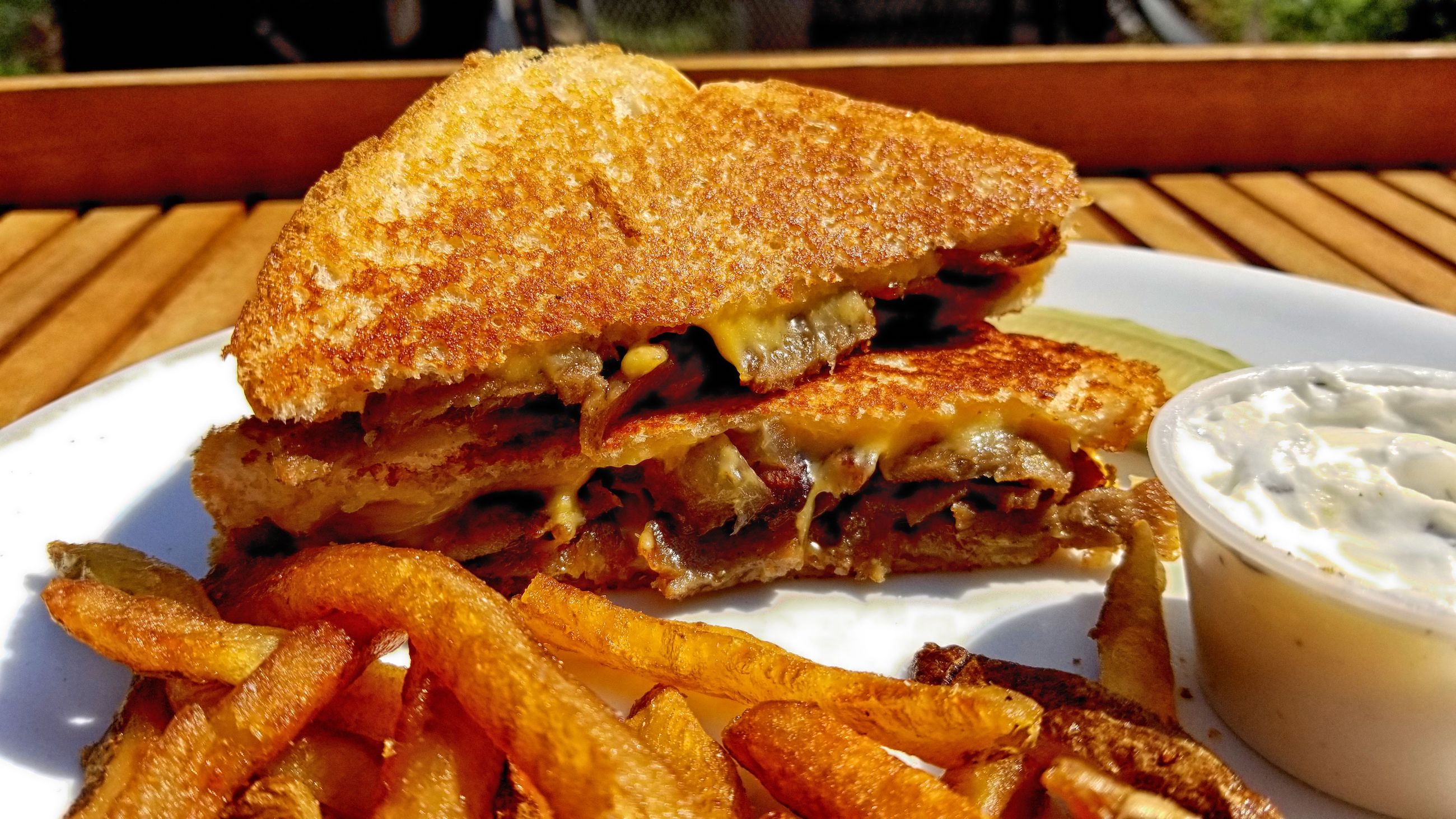
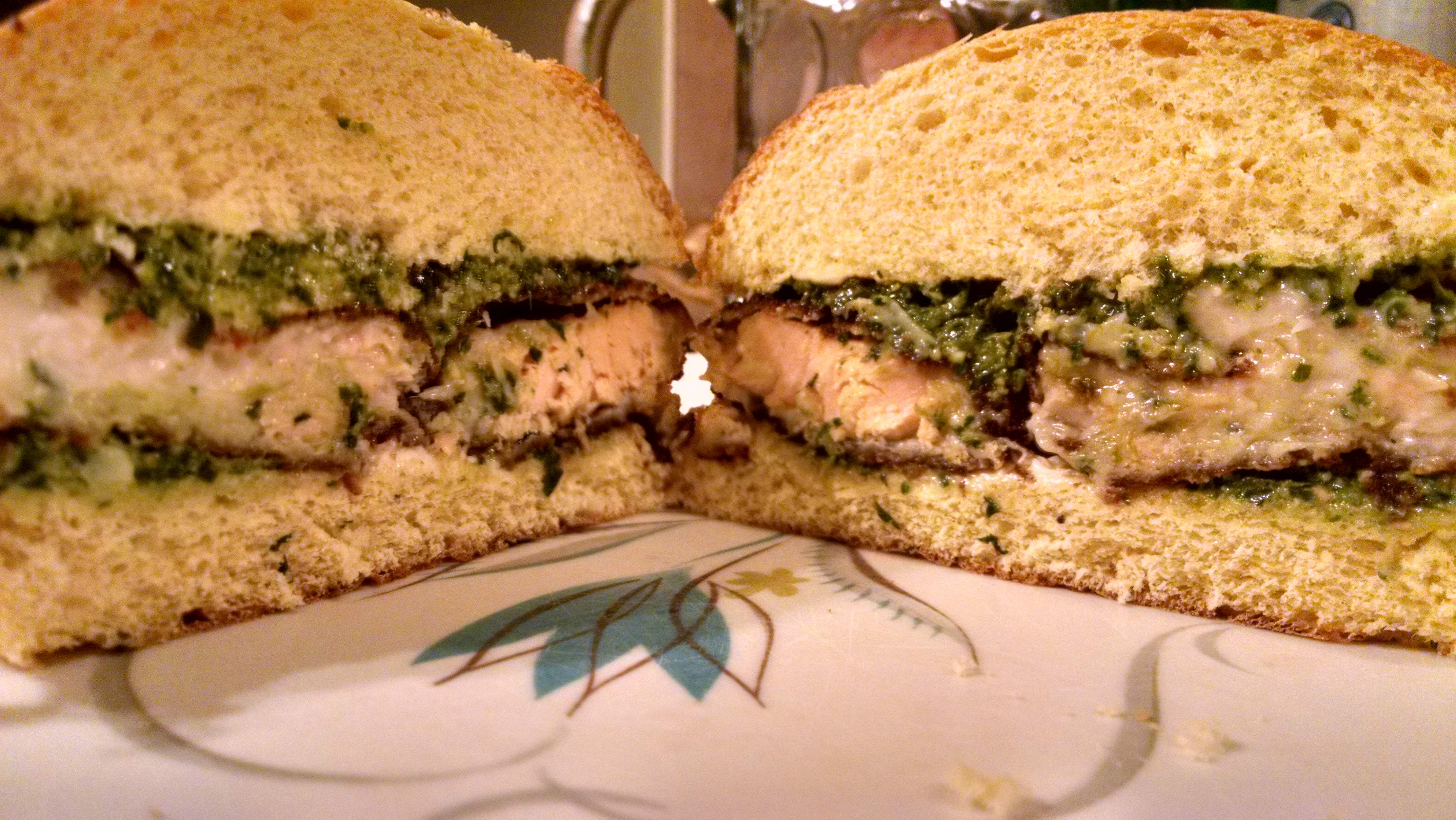






Linguistically speaking, marmalade comes from the Portuguese word for quince, which is marmelo. I suspect that shifting political alliances in the Age of Empires were responsible for the switch to citrus fruit after its adoption by the British. Delicious no matter what, though!
I’m a New Zealander and I make a bit of marmalade most years.
I agree, marmalade is lost in a sandwich. I grew up reading Paddington and I believe that was an eccentricity of the character, not to to be emulated.
My standard mix of grapefruit/orange/lemon is very reliable and popular – thankfully as my recipe is a two day process. If you’re not up for a marathon session on day two, you can stir it, divide it up and freeze it for making occasional batches. Anyway then its a weight for weight pulp/sugar batch boiling process.
My experiments outside it have had been mixed success: kumquats – very good; pink grapefruit – rather tough and sticky. I will give tangelos a go.
As bitter excitements, try Campari (a Negroni is nice), also Chinotto (currently almost impossible to find in NZ).
What the hell, here is my marmalade recipe:
Marmalade
4 grapefruit
3 lemons
2 oranges
About 6 kg of sugar.
(Makes about 20 standard jars).
Day 1
Weigh, then slice the fruit.*
For each pound (453g) of fruit, add 2 pints (1.136 l) of water.*
In a preserving pan or stockpot, boil the fruit and water for 20 minutes, then simmer for 1 hour.
Leave to stand overnight.*
Day 2
Heat the oven to 100°C. Put clean washed jars in the oven to sterilise and keep them hot until they are filled.
If using lids, these need to be brought to the boil in water to sterilise.
To make up a batch of about 4 jars
– Measure 5 cups of sugar into a steel dish or bowl and put in the oven to warm*.
– Stir the pulp and measure 5 cups of pulp into your preserving pan*.
– When the pulp is boiling add the sugar and stir to dissolve.
– Boil rapidly for 10 minutes. Stir quite occasionally while it boils to stop the bottom catching and burning.
– Test that it is ready to set.*
– When it is ready, take off the heat and let the mix sit for 5 minutes.
– Stir again before filling the hot jars.*
– Seal jars immediately with lids or plastic seals.
I won’t bother with the * footnotes, explaining my tips and my fussy instructions.